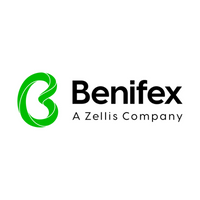How to join employee wellbeing dots

Of course, it’s not a simple task – with such a multifaceted area of the employee experience as wellbeing, employers need to be cautious of a multitude of things (health and safety, employee obligations, over-spending, wasting resource or time, employment regulations to name a few). But that cautiousness can often lead us to simply standing still, until – five years down the line – we are left with a workforce even less financially, mentally, physically and socially well than five years previous.
So, what practical steps can HR, reward and benefits teams take to improving the wellbeing of their people?
The underestimated skill of listening
At the start of any new initiative, the first step is simple, but difficult to get right: we need to listen to our employees. The importance of listening – really listening – is something often forgotten. That is not to say employers or HR teams are not talking to their people, but there is a stark difference in listening versus hearing.
We need to hear what people want so we can deliver it. The old way of working, of being locked in a room in an ivory tower thinking up an idea to then try and sell to our employees? That way of working is dead.
Joining the dots
On a granular level, many organisations may have wellbeing offerings – your standard employee assistance programme or employer-funded healthcare, for instance – but employers now need to work towards joining together all of their wellbeing components to create a well-rounded programme for their employees.
We log into an average of 29 separate systems at work; 50% of which are HR-related. But within these systems, wellbeing tends not to have a specific home. It’s become like a dot-to-dot, scattered across the organisation, and so we need to start thinking about creating a linked-up, holistic scheme at work – here, technology can help.
Reactive vs proactive wellbeing
Historically, platforms have simply brought together a collection of wellbeing products, and then given them a central hub to live in; a place to transact.
The focus now is to bring together content to create a joined-up employee journey without placing the onus on the employee to self-discover what is available to them, and the steps they need to take. This journey should bring together not just the traditional flexible benefits offered by an employer, but the wider offering; for example, a free day’s holiday on your birthday or email notifications of the next work event. If these types of offerings were promoted further, they would demonstrate the employer’s commitment to the wellbeing of their employees.
So, how do we get employees involved and interested? We need to purposefully design what we call engagement ‘loops’ to ensure our people are constantly going through this cycle of Learn, Plan, Do when it comes to their wellbeing.
Tailored communications
We’ve seen our customers use targeted communications – delivered at key points throughout the year – to start building a campaign of content which supports the education of their employees, and signposts how they might be able to use these offerings to take actions. When using our communications manager, we can segment recipients, but also track engagement with the content. So, you can understand who is engaging with that content and who isn’t. This is crucial in executing a campaign and ensuring we learn from it and build upon it in future.
As an example, we worked with one customer to deliver some specific communications promoting the importance of pension saving. The focus wasn’t so much on the product itself, but on education; enabling employees to make better-informed decisions. Then, in situations where there’s been a change (such as pension contribution levels increasing), we’ve used a video embedded within the content to highlight those changes. This kind of content, which previously would have been limited to an unscalable face-to-face approach, is now delivered in a way that captures the personal elements of a presenter, delivered on a mass scale.
Looking to the future
While artificial intelligence (AI) is one of those terms that immediately worries people, when we consider the ubiquity of systems like Siri and Alexa, we can start to think about how this kind of technology – which now slots into our everyday lives outside of work – can play its part in the workplace as well. Specifically, in wellbeing.
We see a role for AI in areas such as mental wellness and financial education, albeit much of this is aspirational at this time. In particular, we see how automated search, machine-learning and chatbots may build upon the current capability of an employee support centre, thereby offering employees decision-assistance, the chance to self-diagnose their queries and educate themselves.
Whatever the future of employee wellbeing looks like, right now employers need to take proactive steps to educate and support employees on their wellbeing journey – and that begins with following through on our promises, and joining up the dots.
The author is Adam Mason, professional services director at Benefex.
This article is provided by Benefex.
Supplied by REBA Associate Member, Benifex
The home of award-winning employee benefits, reward, recognition, & communications.







